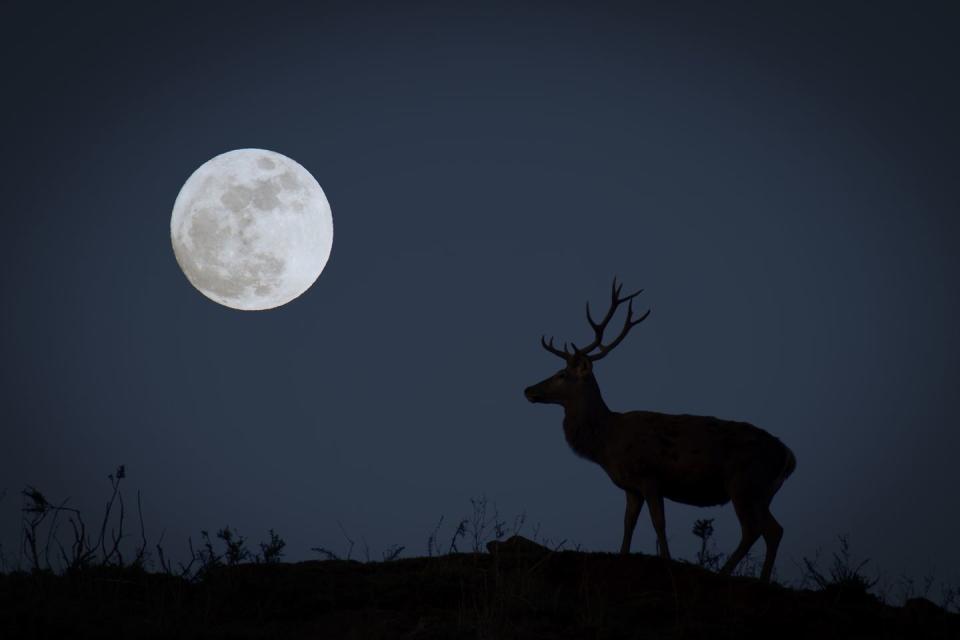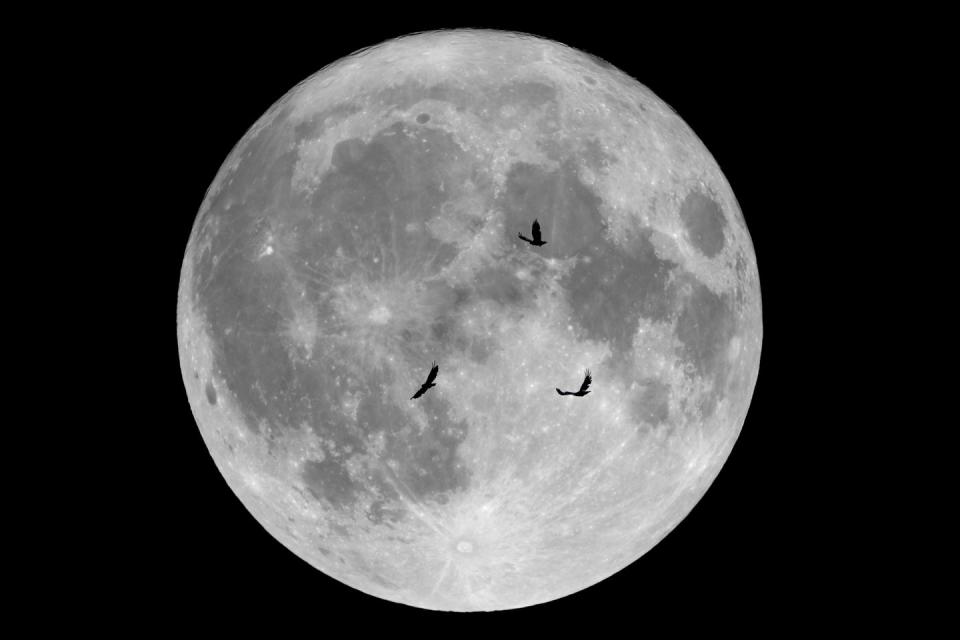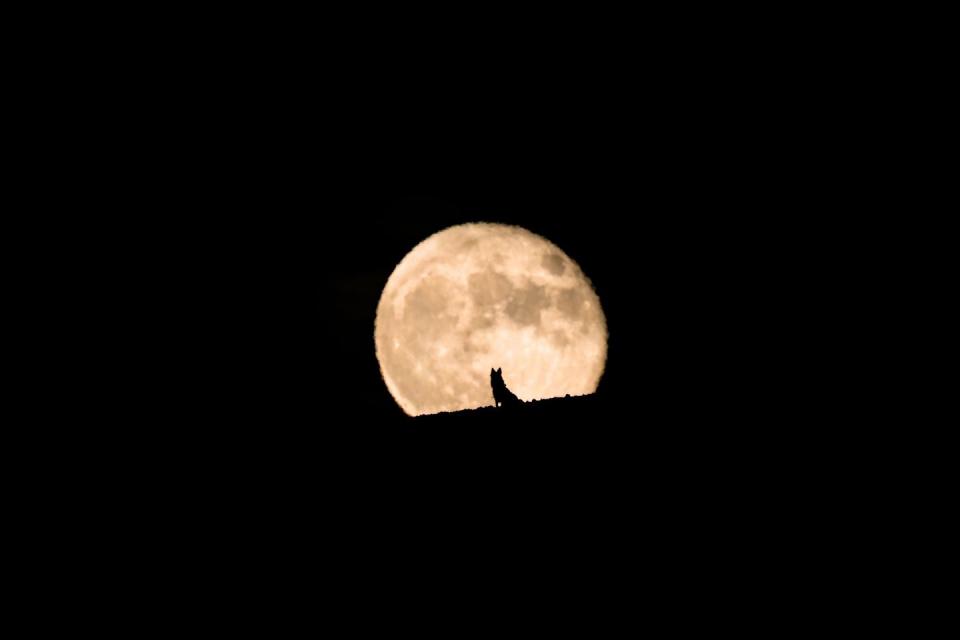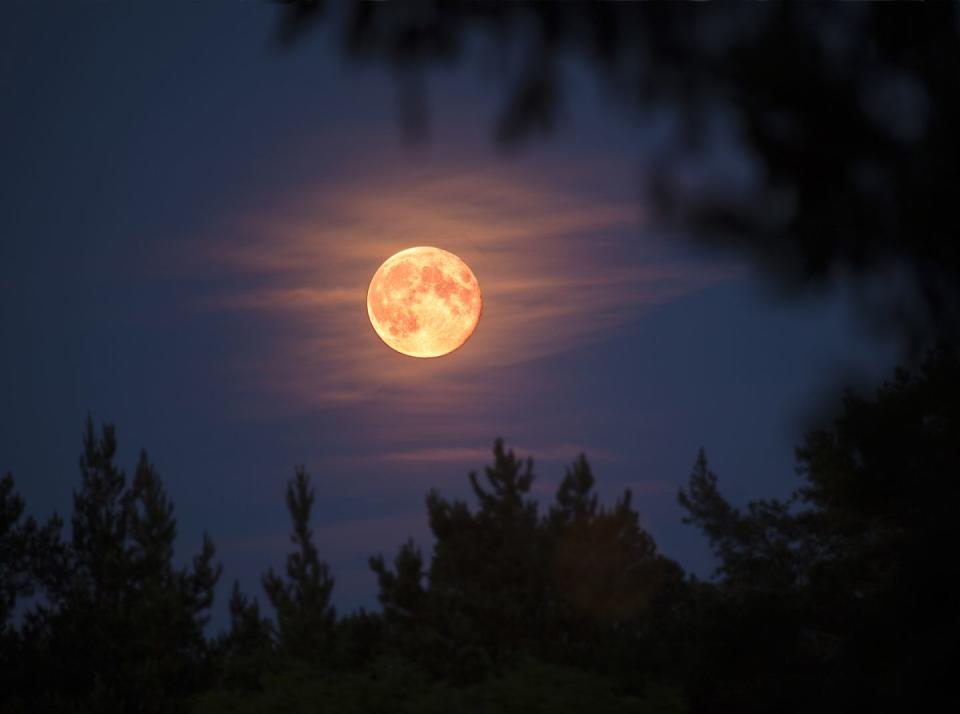Here's What Tonight's Super Hunter Moon Really Signals About the Weather

Get ready to pull out the magical moon quotes. The full Hunter’s Moon on Wednesday and Thursday, October 16–17, is a going to be a good one.
The third consecutive full supermoon of 2024, it’s the closest full moon of the year! That means its diameter will appear just shy of 14% percent larger than the an average full micromoon, according to NASA. It can be hard to tell without a comparison, so here’s a side by side.

According to astronomer Fred Espenak, who literally writes the book on this stuff (he’s calculated full and new moon distances from Earth through year 2500 on his site AstroPixels.com), October’s full Hunter’s Moon will swing by Earth at a distance of only 357,364km (222,056 miles) from Earth.
Compare that to 2024’s most distant full micromoon in February, which skirted by at 405,917km (252,225 miles) away. That’s a difference of more than 30,000 miles!
What’s more, there’s plenty of neat history and noteworthy features about this full moon and the seasonal and weather shifts it signals. As the name suggests, the Hunter’s Moon traditionally signaled it was time to store up meat for winter.
Like the Harvest Moon that falls before it, the date of the Hunter’s Moon is determined by the autumn equinox, an astronomical event in late September that marks the official start of fall and the coming of days shorter than nights. This is why the Hunter’s Moon, though usually in October, will occasionally fall in November—a reminder that the sun and moon were helping humans anticipate the seasonal weather shifts long before the 12-month solar calendar replaced traditional lunar ones.
In other words, those sweater weather vibes you’re feeling? They’re real and right on time.
The full Hunter’s Moon will reach peak full moon phase on Thursday, October 17, on 7:26 a.m. ET, which means if you’re on the East Coast, prime viewing is in the morning just before moonset (perhaps before you head to Krispy Kreme to snag the one-day-only Super Moon Doughnut).
But if you live further west when the peak time will be in the wee morning hours, not to worry. The moon is technically full only a moment, but to our eye, it will appear fat and full tonight (Wednesday) and tomorrow night too.
What is a Hunter’s Moon, and what does it mean?

The Hunter's Moon comes once a year and is always the next full moon after autumn's Harvest Moon. The name comes from the Algonquin Native American tribe, says The Old Farmer's Almanac, and reminds us that traditionally in many cultures this is the time to hunt and store up meat for the long winter.
Though usually in October, the Hunter's Moon can fall in November on rare occasions. That's because, like the Harvest Moon, its date is determined by the autumn equinox, one of the two times of year when the sun aligns with Earth's equator. The Harvest Moon is the full moon closest to the fall equinox, and the Hunter's Moon follows.
October's moon might also be called the Falling Leaves Moon, the Drying Rice Moon, or the Freezing or Ice Moon. Another name, the Migrating or Travel Moon, is thought to nod to the seasonal southernly migration of animals and birds but, according to NASA, may also refer to northern Native American tribes leaving mountainous areas ahead of the cold winter.

What is special about a Hunter's Moon?
The Hunter's Moon shares a unique characteristic with the Harvest Moon: For several nights in a row, a full or nearly full moon rises around sunset in mid to high northern latitudes. (Check your local moonrise time for the exact time.) This is significant because, other times of year, the moon can rise up to an hour later each passing day due to the angle of the moon's orbit in relation to Earth's orbit around the sun, says Astronomy.com.
Traditionally, the early evening moonlight provided by the Hunter's Moon aided hunters during a crucial time for storing up food, just like the Harvest Moon provided extra light to farmers bringing in the harvest. Also around this time, says The Old Farmer's Almanac, animals were drawn to scraps leftover from the fall harvest, and the cleared fields made them easier for hunters and other predators to spot.

You might also notice the Hunter's Moon looking particularly big and orange. Both characteristics result from viewing the moon when it's low in the sky. The moon illusion makes the moon appear larger when it's near the horizon. Plus, you're moon gazing through a thicker layer of Earth's atmosphere, versus a thin layer when the moon is high in the sky, and our atmospheric particles add color. Think about it: The days are shorter, so you're probably wrapping up your day and heading home around sunset—the same time the Hunter's Moon is rising above the horizon and sure to catch your eye.
Once in a blue moon (literally), the Hunter's Moon will fall on October 31, aka Halloween, and since the lunar cycle is 29.5 days, such an occurrence will always be a blue moon (the second full moon in a month). But don't expect a full Halloween Hunter's Moon any time soon. It only happens every 18 to 19 years, and the last one happened in 2020.

What is the Feast of the Hunter's Moon?
Of course, the fall harvest and hunting efforts to store up extra meat for winter make the Hunter's Moon a natural time for feasting. Today, the Feast of the Hunters' Moon is an annual event on the banks of the Wabash River near West Lafayette, Indiana. It commemorates a mid-1700s gathering of French fur traders and Native Americans at Fort Ouiatenon, the first fortified European outpost in the area.
If you plan a trip, expect 18th-century reenactments, an authentic feast, and French and Native American dance and music, among other activities. But take note, this autumn event is not necessarily timed with the full Hunter's Moon—in 2024, the event took place on October 5–6.
You Might Also Like


